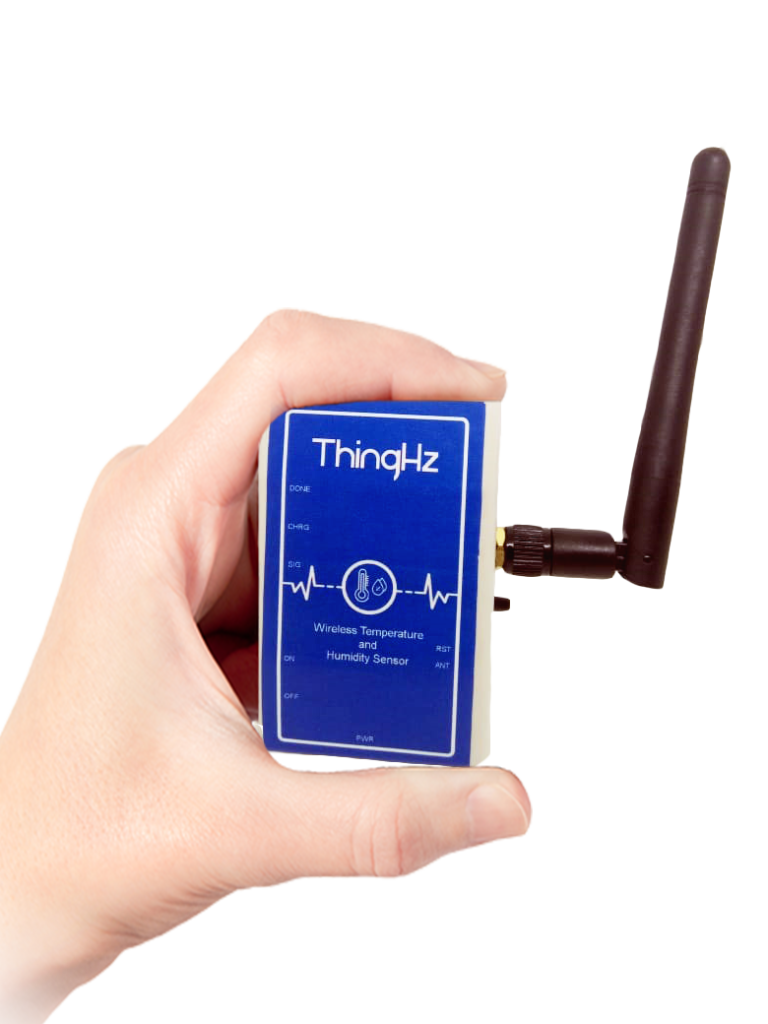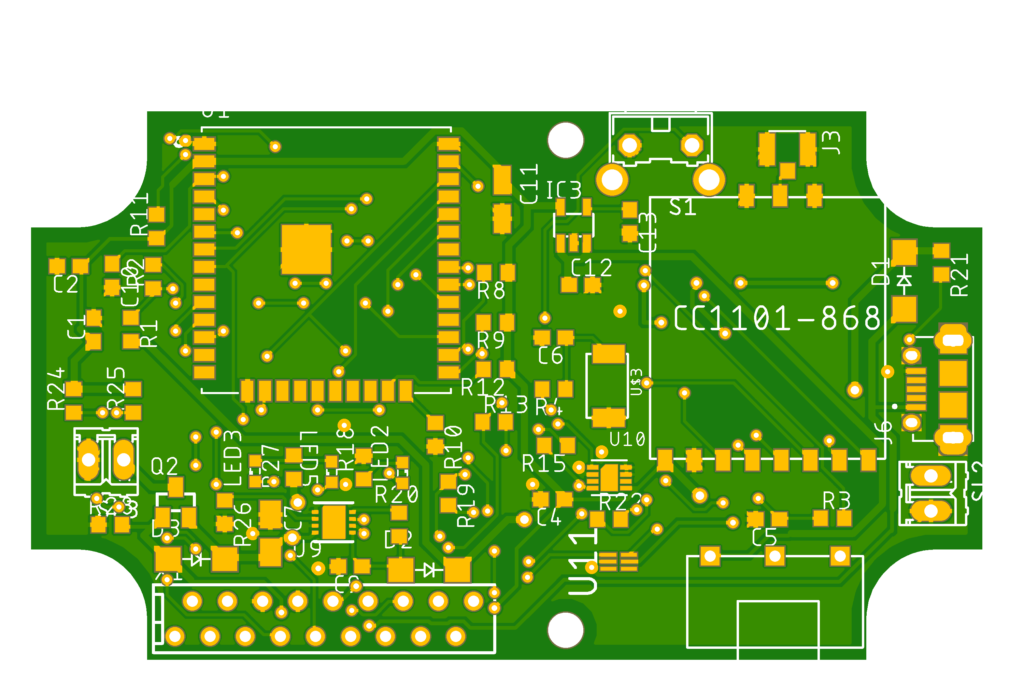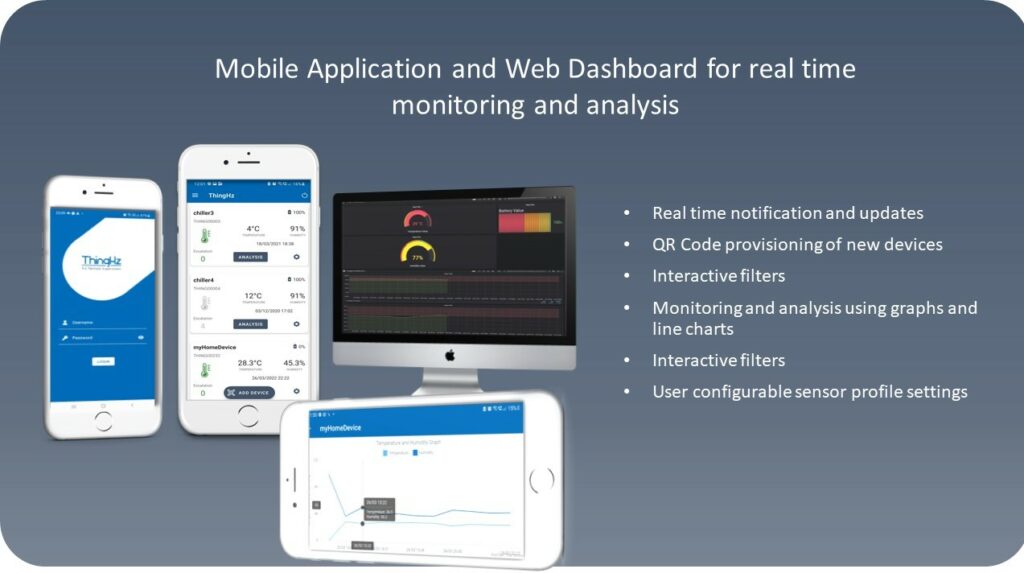
ThingHz is ESP32 based development boards for easy prototyping and interfacing. Powered by ESP32-WROOM-32U WiFi and BLE Soc. ThingHz is easy to integrate with your existing IoT application and is ready to deploy the device. It facilitates development by exploiting all features of the ESP32 SoC.
Features
- Onboard SHT31 Temperature and humidity sensor.
- Available power options: can be powered by battery, solar(PV cell) or USB
- long-range antenna.
- Battery charge indicator and signal LED
- 18 GPIOs
- wall mounted IP65 rated enclosure.
Open-Source materials
- ThingHz provides a library of around 50+ IoT projects.
- ThingHz PCB Designs and schematics.
- Supports multiple programing environments like Arduino IDE, VS-Code and ESP-IDF

Hardware Specification
ESP32
- Module: ESP32-WROOM-32U
- Core: ESP32-D0WD
- Number of cores: 2 (dual core)
- WiFi: 2.4GHz up to 150 Mbits/s
- Bluetooth: BLE (Bluetooth Low Energy) and legacy Bluetooth
- Architecture: 32 bits
- Clock frequency, Up to 240 MHz
- RAM: 512 KB
- SPI flash: 32 Mbits 3.3 V
- Crystal: 40 MHz
- Antenna: U.FL connector (which needs to be connected to an external IPEX antenna)
ESP32 Peripherals
- 18 Analog-to-Digital Converter (ADC) channels
- 3 SPI interfaces
- 3 UART interfaces
- 2 I2C interfaces
- 16 PWM output channels
- 2 Digital-to-Analog Converters (DAC)
- 2 I2S interfaces
- 10 Capacitive sensing GPIOs
Temperature and Humidity Sensor
Incorporating Sensirion SHT31 sensor transmits highly accurate temperature and humidity samples
Power Options
Can be powered by battery, PV cells(solar) and USB.
Programming environments
The ThingHz can be programmed in different programming environments. You can use:
- Arduino IDE
- Espressif IDF (IoT Development Framework)
- Micropython
ThingHz mobile Application
With the ThingHz device, you will get ThingHz mobile application. Where you can deploy your IoT projects and interact with your hardware.

Wrapping Up
We hope you’ve found this introduction to the ThingHz guide useful. Next, you will learn about getting started with Arduino IDE and ESP32. Stick to ThingHz for more upcoming IoT projects. Keep Learning.